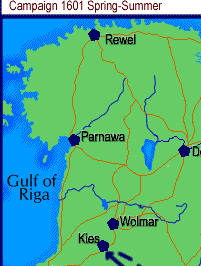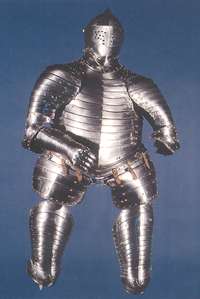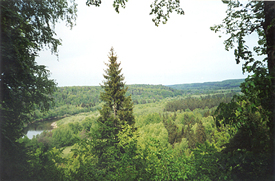
Battles and Campaigns
|
|
Swedish Polish War 1600 to 1609 1601 Spring Summer Campaign (1)
So in the beginning of 1601 the Swedes had mastered a significant part of Livonia and advance detachments moved beyond the river Dzwina into Courland and Zmudz. It was essential that the line of the Dzwina did not fall and that the bridgeheads were maintained for future operations. Poland-Lithuania's most important forts lay along this river:-
The success of the Swedish offensive had galvanised the Sejm into passing taxes for the organisation of a strong 20,000 army for a Livonian campaign. The Lithuanian Grand Hetman Krzysztof Radziwill the "Thunderbolt" dispatched Jan Sicinski to organise the forces in Livonia and instructed him to concentrate them in the region of Birz. On 9th April Radziwill ordered the new forces to concentrate at the end of April at Oniksztach. In the beginning of May Radziwill sent most of these forces to Sicinski. On 11th May with 800 men he crossed the Dzwina at Kokenhauzen, forcing the Swedes into the town and blockading them. He then sent for reinforcements which increased the Commonwealth forces to 2,000 by the end of the month. Meanwhile the new Grand Lithuanian Field Hetman Jan Karol Chodkiewicz (Jonas Karolis Chodkevicius) had moved on 11th May from Wilno to Riga. The Swedes responded to the blockade with a relief
force bringing supplies. Boat transports moved along the Dzwina
river and on 28th May Gyllenhjelm left for Kokenhauzen. The next
day Sicinski met the Swedes a mile from Kokenhausen and forced them
to retreat. The same day Radziwill arrived capturing the With such a strong enemy force in the region Radziwill decided he had to deal with them. At the beginning of June he sent Sicinski with around 1,000 men, mainly cavalry, to Erlaa. They reached Erlaa in the evening of the same day. Gyllenhjelm with about 1,000 cavalry and 1,000 infantry, formed his cavalry on the left bank of the river Oger, its first line of 500 horse were in a narrow between hillocks. They were ordered to fire their pistols once and then attack the Poles and Lithuanians with cold steel. In order to 'assist' their morale he ordered the retreat to be partly barred by wagons. This left a gap of 3km near where he positioned his second line of cavalry. Under the fort on the right bank of the river he left his infantry. Sicinski attacked the first line of Swedish cavalry with his hussars. The Swedes, untrained for their new tactics, fired their pistols and broke. Next the hussars smashed the second line of cavalry. The Lithuanian infantry attacked the wagons and lay siege to the remnants in the buildings on the left wing of the enemy. The Poles and Lithianians then looted the Swedish camp. Gyllenhjelm managed to organise a counter attack with his infantry, surprising the disorganised Commonwealth troops. They regrouped on the eastern bank of the river and waited for sunset. Gyllenhjelm felt unable to continue the engagement, garrisoning the castle with his infantry and retreating with his cavalry through Pebalg to Kies on 3rd June. Polish-Lithuanian losses were 54 and Swedish 400. By the middle of June the Polish-Lithuanian forces at Kokenhausen reached just under 4,000 men with 16 canons. Radziwill decided that any assault should be undertaken only after the arrival of the siege artillery sent for from Riga, and until it arrived he limited his operations to a blockade. He placed artillery batteries with protecting infantry north of the Dzwina from the west and on both sides of the river Perse to the north of the town. The cavalry was divided into three fortified camps, which were organised not only to blockade the town but also in readiness for the anticipated assaults in its capture. The winding river Perse divided the area into two:-
In the first half of June, Radziwill sent a strong diversionary expedition under Sicinski. This force captured Lemburg (Malpilis), Nitau (Nitaure), Lurensburg (Launpils), Suntazi (Suntzel) and laid to waste most of these areas.
Warned of the approaching relief force Radziwill decided to confront them in front of the town. He kept his forces in readiness the whole of the night 22 to 23 June, keeping them in one group shielded by the river and fortified camps. The Swedish forces, having left in the night of 23rd, arrived within some 2km of the town at five in the morning where they formed up for battle. The field of battle was raised along its edge with the Dzwina for some one and a half kilometres to a width of about half a kilometre with the side nearest the river being steep and falling more gently towards the field.
|
|
|||||||||||||||||||||||||||||||||||||||||||||||||||||||||||||||||||||||||||||||||||||||||||||||||||||||||||||||||||||||||||||||||||||||
![]()






 majority
of the supplies sent in the boats.
majority
of the supplies sent in the boats.  The
retention of Kokenhausen was of great importance to Charles and
in June he issued orders for the relief of the town, whose garrison
was being cut down by starvation. Due to the urgency Gyllenhjelm
collected 4,000 cavalry, as well as 900 infantry and 17 field guns.
He was unclear as to the positions of Radziwill's army and judged
that the majority of the cavalry would be positioned on the right
bank of the Perse with the infantry on the left in entrenchment's
open at the rear. His aim was to reach the Dzwina opposite Zelbork
(Selburg, Selpils) and from the unexpected eastern direction surprise
the entrenched Polish-Lithuanian infantry and then to combine with
the town forces to oppose the Commonwealth's horse. His infantry
were supplied with sharpened stakes over 2m long to help deal with
the enemy cavalry, while his cavalry had orders to use their swords,
rather than their pistols. On the 18th June Gyllenhjelm left Kies,
travelling through Pebalg, Festen. On 22nd June he stopped some
20km from Kokenhausen.
The
retention of Kokenhausen was of great importance to Charles and
in June he issued orders for the relief of the town, whose garrison
was being cut down by starvation. Due to the urgency Gyllenhjelm
collected 4,000 cavalry, as well as 900 infantry and 17 field guns.
He was unclear as to the positions of Radziwill's army and judged
that the majority of the cavalry would be positioned on the right
bank of the Perse with the infantry on the left in entrenchment's
open at the rear. His aim was to reach the Dzwina opposite Zelbork
(Selburg, Selpils) and from the unexpected eastern direction surprise
the entrenched Polish-Lithuanian infantry and then to combine with
the town forces to oppose the Commonwealth's horse. His infantry
were supplied with sharpened stakes over 2m long to help deal with
the enemy cavalry, while his cavalry had orders to use their swords,
rather than their pistols. On the 18th June Gyllenhjelm left Kies,
travelling through Pebalg, Festen. On 22nd June he stopped some
20km from Kokenhausen.